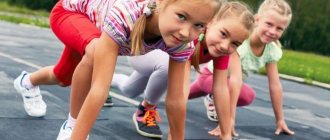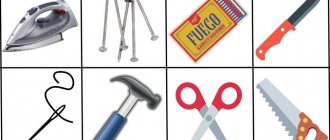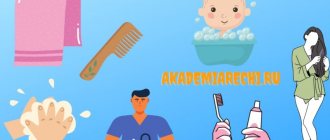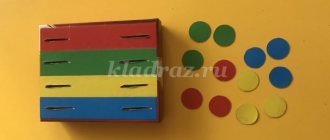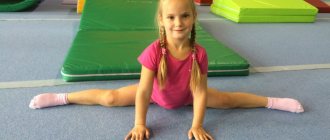Card index of didactic games for older children on the topic “Health and healthy lifestyle”
Card index of didactic games for older children on the topic
"Health and healthy lifestyle"
1. Didactic game “Healthy Baby”
Goal: to introduce children to the rules of personal hygiene and a correct, careful attitude towards their health.
Rules of the game.
The presenter distributes large cards to the children and shows small ones
cards. The one who has this card explains “whether this is good or bad.”
The one who fills out their big card the fastest wins.
2. Didactic game “Dress the kids for a walk.”
Objectives: to develop the ability to distinguish items of clothing depending on the time of year; develop fine motor skills of the hands. Develop grammatically correct speech.
Material: figures of a boy and a girl made of cardboard, paper clothes.
Description: Option 1. The presenter sets the season, and the players dress the child figures in appropriate clothes. The presenter checks the correctness of the task and, in case of errors, corrects them, explaining his actions.
Option 2. The children themselves agree among themselves what season the figures will wear. After completing the task, they explain their choice of clothing.
3. Didactic game “What comes first - what comes next (daily routine)”
Objectives: to reinforce the idea that following the correct daily routine is good for health. Develop the ability to coherently and consistently explain your actions.
Material: plot pictures depicting actions characteristic of a certain period of the day.
Description: invite the child to arrange the pictures in the correct sequence and explain his choice.
4. Didactic game “Health Labyrinths”.
Objectives: to consolidate knowledge about personal hygiene items and their purpose. Teach children to see the boundaries of the drawing (in this case, paths, draw lines without lifting your finger from the picture; develop thinking, logic, eye, perseverance, will; teach them to embrace the entire picture, mentally build a “travel” route.
Material: cards with images of labyrinths.
Description: the child is given the task of finding the way from a personal hygiene item to the part of the body for which it is intended. Explain how and why this item is used.
5. Didactic game “Harmful - Useful.”
Objectives: to form ideas about preventive and health measures. Develop visual perception, voluntary attention, logical thinking, grammatically correct speech.
Material: paired cards opposite in meaning to health, picture chips depicting actions that are harmful or beneficial in a given situation.
Description: Option 1. The child is asked to look at the pictures and determine: which of them depict actions that are harmful to human health, and which, on the contrary, are useful.
“AUTHOR’S D/GAMES on healthy lifestyle”
All-Russian CONTINUALLY professional competition for teachers of preschool organizations “Healthy lifestyle in preschool educational institutions”
Agarkova Tatyana Vasilievna , teacher
Biryukova Valentina Vasilievna , teacher
Sviridova Zhanna Anatolyevna , teacher - defectologist
(typhlopedagogue)
MBDOU d/s combined
view No. 6, Belgorod
Advertising message
“A healthy lifestyle is great!”
“Taking care of health is the most important job of a teacher. Their spiritual life, worldview, mental development, strength of knowledge, and self-confidence depend on the cheerfulness and vigor of children.”
V.A. Sukhomlinsky.
A healthy lifestyle for preschool children is not only physical activity, but also a whole range of measures that should become a priority for the child’s parents. Until the age of 7, a child goes through a huge developmental path, during which both his physical health and personal qualities are established. They are interconnected with each other, which is why it is so important at the very beginning of life to form a base of knowledge and skills for a healthy lifestyle in the baby.
The main aspects aimed at improving the health of preschool children include:
– motor mode;
– personal hygiene;
– hardening.
In our work with children with severe visual impairments (blind and visually impaired children), we use various forms, means and methods of forming the foundations of a healthy lifestyle in preschoolers. The main forms of work are didactic games, creating situations, reading and discussing fiction, project and productive activities, walking, and routine moments. In the daily routine and in direct educational activities we use motor and emotional-psychological relief (physical training minutes, motor discharge, elements of relaxation).
Personal hygiene is extremely important for a child’s health. At the very beginning of life, the baby must learn that the body needs to be looked after. This is important not only for the good condition of the body, but also for the health of others. The child must have personal items: comb, toothbrush, towel and handkerchief. From childhood, you need to teach him how to use these items correctly.
We offer you original didactic games.
Author's didactic game:
“Learn and name personal hygiene items.”
Goal: To consolidate knowledge about personal hygiene items and their purpose, to develop tactile sensations, verbal and logical thinking, memory, and grammatical structure of speech.
Equipment: teaching aid “Guess It”, personal hygiene items – comb, toothbrush, toothpaste, soap, shampoo, washcloth, handkerchief, towel, scissors.
Game description:
The items are located inside the teaching aid.
Option No. 1: visually impaired children look at a picture depicting personal hygiene items, find and name personal hygiene items by touch and tell what they are for.
Option No. 2: blind children find personal hygiene items by touch and tell them what they are for.
Author's didactic game:
"Journey to the Land of Health"
Goal: To form children’s ideas about a healthy lifestyle
Equipment : playing field with pasted pictures, cube, colored chips (we have nesting dolls)
Description of the game : Players take turns throwing a die on the sides, which shows from 1 to 6 dots, moving their chip forward in as many circles as there are dots on the die. If the chip is in the picture, the child talks about what is shown in the picture and what rule must be followed in order to be healthy; if the answer is incorrect, the child skips a move; if the answer is correct, he takes the next one. If a chip lands on a circle with an arrow, then the player moves forward or backward along the arrow. The winner is the one who gets to the land of health first (to the finish line).
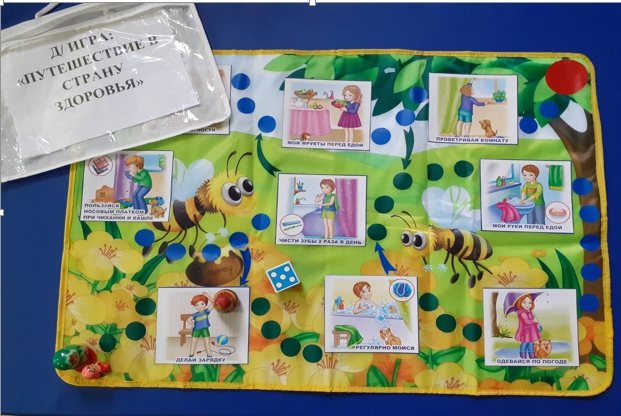
Didactic games healthy lifestyle (middle group)
Didactic games on developing a healthy lifestyle
No. 1 Topic: “Child and health”
Who needs what?
Goal: to consolidate children’s knowledge about the items necessary for work as a doctor, cook, or salesperson.
Material: a circle divided into sectors, in each of them there are pictures depicting objects necessary for the work of a doctor, cook, seller, in the middle of the circle there are arrows, they depict a doctor, cook, seller.
Progress of the game: the teacher invites the child to find an item necessary for the work of a doctor (cook, salesman).
No. 2 Topic: “Child and health”
Put the pictures in order
Goal: to systematize children’s ideas about health and a healthy lifestyle, to develop speech, attention, and memory.
Material: pictures depicting moments of the daily routine
Progress of the game: the teacher says that the wizard Confusion has mixed up the pictures of the daily routine, and suggests putting the pictures in order.
The teacher summarizes the children's statements.
Every morning, to be healthy, we start with exercise.
In order to grow strong, dexterous and brave, we do exercises every morning.
The teacher invites everyone to remember their favorite exercise, show it to everyone and do it together.
No. 3 Topic: “Child and health”
Let's dress the doll for a walk
Goal: to consolidate children’s knowledge about clothing, to develop children’s ability to dress a doll according to the season of the year, the weather, to systematize children’s ideas about health, to develop children’s attention, memory, and logical thinking.
Material: paper doll with different clothes
Progress of the game: the teacher says that the doll is going for a walk, but does not know what to wear, it is winter and it is very cold outside (various situations).
Children “dress” the doll and explain their choice.
No. 4 Topic: “Child and health”
What is good, what is bad
Goal: to introduce children to the rules of personal hygiene and a correct, careful attitude towards their health; develop children's speech, attention, and memory.
Material: fields divided into squares, in the center of the field there is a negative and positive picture, pictures with different situations.
Progress of the game:
Option 1: Children are given fields; a negative or positive picture is depicted in the center of the field. Children are invited to play lotto, showing and accompanying their actions with explanations - “what is good and what is bad”
2nd option. Showing pictures can be accompanied by children's motor activity. For example, children react to positive pictures by jumping, and when shown a negative picture they sit on the floor.
No. 6 Topic: “Healthy Products”
Wonderful pouch
Goal: to clarify the names of fruits and vegetables, to develop the ability to identify them by touch, name and describe them.
Material: bag, dummies of vegetables, fruits
Progress of the game: the teacher shows the group a “wonderful bag” with dummies of vegetables and fruits and invites the children to find out what is in the “wonderful bag”. The child puts his hand into the “wonderful bag” and identifies it by touch, then takes it out and describes it according to the diagram. The teacher gives a sample description of vegetables and fruits.
— I have a tomato, it’s red, round, smooth. And you?
If the children find it difficult to answer, the teacher asks leading questions: what form? What colour? What does it feel like?
Children put all the vegetables and fruits on a tray.
No. 5 Topic: “Child and health”
ABC of health
Goal: to systematize children’s ideas about health and a healthy lifestyle, to develop speech, attention, and memory.
Material: illustrations
Progress of the game: play from 1 to... people. The teacher names the rule, and the child finds a card - an illustration of this rule. Or the teacher shows a card, the child says what needs to be done in this situation.
No. 7 Topic: “Healthy Products”
Guess the taste
Goal: to clarify the names of fruits and vegetables, to develop the ability to identify them by taste, name and describe them.
Material: a plate with chopped vegetables, fruits Game progress: the teacher brings in a plate with chopped vegetables, fruits, invites the children to try a piece of some vegetable, fruit and asks questions: “What is it?”, “What does it taste like?”, “Sour, How are you?”, “Sweet, how are you?”
No. 8 Topic: “Healthy Products”
Find out and name vegetables
Goal: to consolidate the names of fruits and vegetables, to develop the ability to recognize them according to the teacher’s description
Progress of the game: the teacher describes a vegetable (fruit), and the children must name this vegetable (fruit).
No. 9 Topic: “Healthy Products”
Useful and harmful products
Goal: to systematize children’s ideas about harmful and healthy products, exercise their ability to differentiate them, and develop the need to take care of their health
Material: pictures of various products, two hoops
How to play: To be healthy, you need to eat right. Now we will find out if you know which foods are healthy.
The teacher offers the children pictures using two hoops. In one hoop, children select healthy foods and explain their choice, in the second – foods that are harmful to health.
No. 10 Topic: “Healthy Products”
Find out the taste
Goal: to consolidate knowledge about vegetables and fruits, the ability to identify them by taste.
Material: a plate with chopped vegetables, fruits Progress of the game: the teacher brings in a plate with chopped vegetables and fruits, invites the children to try a piece of some vegetable or fruit and asks questions: “What is this?”, “What does it taste like?”
No. 11 Topic: “Healthy Products”
Name it correctly
Goal: to clarify children’s knowledge about vegetables and fruits, their qualities (color, shape, taste, smell), consolidate the ability to recognize them from a picture and give a brief
description.
Material: pictures of vegetables, fruits
Progress of the game: the teacher asks the child to choose a picture with a vegetable or fruit and describe it.
— I have a tomato, it’s red, round, sweet. And you?
If the children find it difficult to answer, the teacher asks guiding questions.
questions: what shape? What
colors? What does it taste like? What is the smell?
No. 12 Topic: “Personal hygiene”
Let's wash the doll
Goal: to consolidate knowledge about personal hygiene items for washing and washing, the sequence of actions, to promote the formation of the habit of neatness.
Material: various items and personal hygiene items for washing and washing, dolls.
Game progress: 2 people play. First, they are asked to choose from a variety of items those that “help” wash (wash) the doll. And then they wash it. The winner is the one who correctly selects personal hygiene items and correctly consistently washes (washes) the doll.
No. 13 Topic: “Personal hygiene”
Tanya caught a cold
Goal: to promote the development of the skill of using a handkerchief, to reinforce the knowledge that when sneezing and coughing you need to cover your mouth with a handkerchief, and if someone is nearby, turn away
Material: handkerchief
Progress of the game: the teacher asks: why do people need a handkerchief?
And then he offers the children various situations, which they play out together with the kids:
— What should you do if you want to sneeze? Etc.
No. 14 Topic: “Personal hygiene”
Choose pictures
Goal: to clarify children’s ideas about personal hygiene items, to develop healthy lifestyle skills
Material: pictures of various items, pictures of personal hygiene items
Progress of the game: the teacher asks you to select only pictures depicting objects that help take care of the body (face, teeth, hair)
No. 15 Topic: “Personal hygiene”
Hygiene rules
Goal: to consolidate cultural and hygienic skills (washing, dressing, brushing teeth, combing hair, bathing), to develop the ability to show these movements using facial expressions and gestures and to guess by showing them.
Progress of the game: The teacher asks the children, using facial expressions and gestures, to show how they wash themselves (dress, brush their teeth, etc.), observing the sequence of performing these skills. Or the teacher shows with the help of facial expressions and gestures what he is doing, and the children guess
No. 16 Topic: “Personal hygiene”
Let's give the dolls different hairstyles
Goal: to consolidate hair care skills, clarify the names of the items necessary for this, and formulate the concept of “neat appearance”
Material: dolls, combs, hairpins.
Progress of the game: the teacher invites the children to comb the dolls' hair.
No. 17 Topic: “Human body”
Guess by smell
Goal: to form ideas about a person’s assistant (nose), to develop skills in exploring objects using the corresponding sense organ
Material: jars with different smells (vanilla, orange, soap...) Progress of the game: the teacher invites the children to smell jars with different smells and asks:
- What helped you smell this smell?
– Where can you smell such a smell?
No. 18 Topic: “Human body”
Playing with a microphone
Goal: to systematize children’s ideas about body parts, develop speech, cultivate the ability to listen to each other
Material: microphone
Progress of the game: the teacher begins a sentence, and the child continues it, speaking into the microphone.
I am the head, I can... think, but I can’t speak.
I am a leg, I can... walk, but I can’t draw.
I am a hand, I can... draw, but I don’t know how to listen... etc.
No. 19 Topic: “Human body”
You are a part of me
Goal: to systematize children’s ideas about body parts, develop speech, attention, and memory.
Material: ball
Progress of the game: the teacher throws the ball to each child, asking a question.
I am a face, you are a part of me. Who are you? (eyes, eyebrow, nose, etc.)
I am the head, you are my part. Who are you? (hair, ears...)
I am the body, you are my part. Who are you? (back, stomach...)
No. 20 Topic: “Human body”
Who am i?
Goal: to train children in the ability to correctly name parts of the human body, the ability to distinguish between girls and boys.
Material: pictures of a boy and a girl, overlay cards.
Progress of the game: the teacher names any part of the body, the child finds it among the cards and puts it on the picture. Or the teacher shows a card, the child names the drawn part of the body and places it on the picture.
No. 21 Topic: “Human body”
Remember the move
Goal: to exercise the ability to realize, remember and reproduce the movements shown, to develop visual-motor memory and attention.
Progress of the game: the teacher or child shows the movements. Children must remember and reproduce them.
No. 22 Topic: “Human body”
Message from the monkey
Goal: continue to form an understanding of your body; consolidate knowledge that objects can be recognized by appearance, smell, taste, touch; practice identifying fruits by taste and smell.
Material: parcel with vegetables, fruits
Game progress: 4 people play. The teacher says that a package has arrived from the monkey; it may contain either a vegetable or a fruit. Invites children to find out what kind of vegetable or fruit is in the package. One child is asked to put his hand into the parcel and determine its contents by touch. Another is asked to try a piece and identify it by taste, a third is asked to identify it by smell, and for a fourth, the teacher describes this vegetable (fruit). The one who guesses correctly wins.
№23
No. 23 Topic: “Human body”
No. 24 Topic: “Child on the city streets”
What does the traffic light say?
Goal: to consolidate knowledge about the meaning of traffic light colors and rules of behavior on the street.
Material: colored cardboard circles (red, yellow and green), traffic light model.
Progress of the game: the teacher distributes red, yellow and green mugs to the children. The traffic lights are sequentially “switched”, and the children show the corresponding circles and explain what each signal means. The winner is the one who correctly shows all the circles and talks about the purpose of the colors.
Guess by sound
Goal: to form ideas about a person’s assistant (ears), to develop skills in exploring objects using the appropriate sense organ
Material: musical instruments Progress of the game: the teacher behind the screen makes sounds on various musical instruments, the children guess them
— What helped you hear different sounds?
No. 25 Topic: “Doctors are our assistants”
If someone gets sick
Goal: to consolidate the knowledge that in case of a serious injury it is necessary to call an ambulance doctor by calling “103”, practice calling a doctor
Material: phone
Progress of the game: If we ourselves cannot cope with the situation, then we call a doctor or an ambulance.
Children are encouraged to call a doctor at home. First, dial the phone number and call it in order:
last name, first name -> address -> age -> complaints
No. 26 Topic: “Dangerous objects”
Sources of danger
Goal: consolidate knowledge about objects that may be objects of danger, develop the ability to select pictures of objects according to the described situation, cultivate a sense of camaraderie
Rule: do not push, do not take objects from each other.
Material: layout or game corner with household items, prizes (chips or pictures)
Progress of the game: the teacher turns away, and during this time the children must take from the model or in the play corner those objects that, in their opinion, may be dangerous. Then everyone explains their choice. Answers are rewarded with prizes.
No. 27 Topic: “Dangerous objects”
The game is serious business
Goal: to train children in choosing safe objects for games based on pictures, to consolidate knowledge of what objects can be played with.
Material: pictures depicting various objects (dangerous and non-dangerous), two hoops
Progress of the game: The teacher invites the children to arrange the pictures into two hoops. In one hoop, children select pictures depicting objects that can be played with, in the second, pictures depicting objects that cannot be played with, and explain their choice.
No. 28 Topic: “Dangerous objects”
A hundred troubles
Goal: to consolidate ideas about dangerous situations in everyday life, about the correct actions in specific situations; develop attention; develop a sympathetic attitude towards the victim
Material: pictures of children in dangerous situations
Game progress: several pictures lie face down on the table. The child chooses any one, examines it and tells: what is depicted on it, why this happened to the child, what he did wrong, what should the child do now.
No. 29 Topic: “Dangerous objects”
We are rescuers
Goal: to consolidate ideas about dangerous situations in everyday life, about the correct actions in specific situations; develop attention; cultivate a sympathetic attitude towards the victim.
Material: pictures depicting children in specific dangerous situations, a set of cards depicting the actions that need to be performed in a given situation.
Progress of the game: the teacher places a picture depicting a dangerous situation on the table, the child examines it and, from all the cards depicting actions, selects the two correct ones and lays them out sequentially.
No. 30 Topic: “Dangerous objects”
What do we know about things
Goal: to expand children’s understanding of the rules of safe behavior at home; develop attention and memory; foster a sense of cooperation
Material: cards depicting a cut, burn, hand bruise and fire, pictures depicting various household items.
Progress of the game: from 2 to 4 children take part in the game, each of them takes a picture with the image of an “injury”. The teacher takes turns holding up a picture of an object. Participants must guess what injury could result from improper handling of this item, match it to their card and take the picture. When selecting, the child must explain why this or that object is dangerous and tell the rules for communicating with them.
No. 31 Topic: “Dangers around us”
On a walk
Goal: to consolidate knowledge about correct behavior and communication with animals, to correlate what is shown in the pictures with correct and incorrect
actions when meeting animals
Material: illustrations, 2 hoops
Game progress: several pictures lie face down on the table. The child chooses any one, examines it and tells what is depicted on it, and whether the child is doing it right or wrong.
Or put pictures in one hoop depicting the correct actions when meeting animals, and in the other - incorrect actions
No. 32 Topic: “Dangerous objects”
One way or another
Goal: to develop children’s ability to distinguish life-threatening situations from non-threatening ones; develop attention; cultivate a desire to comply with safety rules.
Material: 2 cards – with a red and a green circle,
pictures depicting dangerous and safe actions of children;
Rules: under the red card (circle) put pictures depicting situations that are dangerous to the child’s life, under the green card - non-dangerous (allowed).
Options: individually with a teacher;
several children take turns explaining their choice.
No. 33 Topic: “Dangers around us”
What grows where
Goal: consolidate knowledge about where medicinal plants grow
Material: ball
Progress of the game: the teacher throws the ball to each child, asking the question:
—Where does plantain grow? (The child answers and throws the ball back)
—Where does chamomile grow? etc.
No. 34 Topic: “Dangers around us”
Identify a plant by smell
Purpose: to exercise children in identifying mint leaves, flowers, chamomile, and bird cherry by the smell.
Material: mint leaves, flowers, chamomile, bird cherry.
Progress of the game: the teacher invites the children to smell mint leaves (chamomile flowers, bird cherry flowers)
What helped you smell this?
Where can you smell this smell?
No. 35 Topic: “Dangers around us”
If the baby is injured
Goal: to introduce children to basic first aid techniques, because this can often save their health and life.
Material: cards with the most common household injuries, cards with methods of assistance
Progress of the game: The teacher invites the children to choose cards for providing first aid for a cut wound and lay them out sequentially (rinse the wound, apply a sterile bandage, call a doctor)
No. 36 Topic: “Dangers around us”
For mushrooms
Goal: to consolidate knowledge of edible and inedible mushrooms, the ability to distinguish them by appearance in pictures and dummies.
Material: pictures or dummies of edible and inedible mushrooms
How to play: Place pictures or dummies in different places. Children are invited to collect edible mushrooms in a basket.
Didactic outdoor games for preschoolers Healthy Lifestyle Lifestyle
Didactic outdoor games to consolidate preschool children’s knowledge of healthy lifestyle and lifestyle
SEE ALSO Lesson summary on the topic of introducing children to a healthy lifestyle Memo on developing healthy lifestyle habits Didactic games on valeology Lapbook “Book of Health”
Dangerous-safe
Objectives To teach children to determine the degree of dangerous behavior in everyday life and to make the right decisions. Progress of the game The playing area is divided into two zones: yellow and red (dangerous-safe). Children walk scattered around the playground. At a signal, the children stop, the instructor names everyday situations, the children move to the danger zone according to their ideas, and if necessary, the situations are discussed.
- I play ball on the roadway
- I cross the road in the wrong place
- I play in the sandbox on the playground
- I use someone else's comb
- I use someone else's handkerchief
- I left the site with a stranger
- I cross the road at a pedestrian crossing, etc.
Talking body
Objectives Consolidate children's knowledge about body parts, develop coordination of movements.
Progress of the game Children stand in a semicircle. The instructor calls the kids one by one and gives them a task, for example:
- say yes with your head
- say with your foot that you are unhappy
- say with your hand "come here"
- say “thank you” with your body
- say “I don’t know” with your shoulders, etc.
All children repeat the movement shown, guess what the body is saying
Kinds of sports
Objectives To develop the ability to act together, to consolidate knowledge about sports. Progress of the game Children are divided into two teams, a competition is held
- jumping from hoop to hoop
- crawling on your stomach, pulling yourself up with your arms
- crawling under an arch
- run to the cube, take a card (one team has cards with winter sports, the other with summer sports), run back to the team
The team that wins the competition starts the game: using the pictures, the children conspire and pantomime show the sport, the opponents guess. Then it’s the second team’s turn.
Chain
Task Develop memory, attention, develop communication skills Progress of the game Children are given a topic in advance, for example, “Daily routine.” Children line up in a line. The instructor with a large ball gets up first, begins the story and passes the ball to the next child, “In the morning I woke up early...”, the child continues, for example, “I washed my face,” passes the ball to the next, etc. Themes for the game: “We need to cook soup”, “We are going for a walk”
About hygiene rules
Objectives : Develop healthy habits and reinforce hygiene rules. Progress of the game Children stand in a circle, one child in the center, depicting an arrow, spins around himself, the children say “Stop!”, at whom the hand pointed - the arrow answers the instructor’s question with a pantomime, all the children repeat the movements after him
- what do you do when you wake up in the morning
- how do you wash your face
- how do you brush your teeth
- how do you comb your hair
- how do you do gymnastics
- what do you do before eating, etc.
A variant of the game with older preschoolers: children show what they are doing without leading questions, children guess and show how they do it.
Like in the mirror
Task: To teach to coordinate movements. Progress of the game Children line up in two lines opposite each other, forming pairs. First, one of the pair shows the movement, and the second tries to mirror it, then the second shows his movement.
Line up
Task To teach joint actions using non-verbal means of communication. Progress of the game The game is played to the music. Children walk scattered around the hall, the music stops, the instructor gives different commands:
- line up according to height
- line up first boys, then girls
- line up first girls, then boys
- build through one boy - girl
- build first with dark hair then with light hair
- build first with long hair, then with short
- line up along the length of shorts, etc.
True or false
Objectives: Consolidate knowledge on the topic of health, develop coordination. Progress of the game The presenter - the instructor in the role of a doctor - asks questions, and the guys react to them with conventional gestures, for example, if it’s true, then they jump, if it’s not true, they stomp their feet. Questions:
- It's true that adults don't get sick
- Is it true that you should wash your hands before eating?
- Is it true that you can walk without a hat in winter?
- Is it true that by sneezing on your neighbor you can infect him
- It is true that those who do not ventilate the room become healthier, etc.
Artist
Objectives Consolidating knowledge on the topic of a healthy lifestyle, developing speed and dexterity Progress of the game Children stand in a circle. The leader chosen by the counting rhyme “draws” on the back of the person standing next to one of the household items: a comb, a toothbrush, a towel, a washcloth, a cup, a fork..., the player must guess the item and show the action with this item, all children guess the item and name it if the player managed to correctly show what was drawn, he becomes an artist, if not, the stick is placed between the players, the children run in a circle in different directions, trying to be the first to take the stick. Whoever manages to take the stick first continues the game.
Homemade games for children in the middle group
Manufacturers of children's goods offer an increasingly diverse range of games and toys for early development. However, it is not necessary to use only purchased teaching materials. In many cases, homemade games and add-ons to store-bought sets may be suitable.
The teacher should not completely take upon himself all the hassle associated with the production of the elements necessary for the game. His task is to identify the goal and convey it to the parents. Conversations should emphasize the importance of their participation in the life of the group.
Note! Items made by mother's or father's hands are of great importance for any child and help his socialization among his peers.
Making educational games with your own hands
Parents can make elements that bring children's play closer to reality.
- Sew clothes and bed linen for the doll corner. Help in making masks for theatrical activities.
- To maintain interest in toys, some of the available games should be removed from the free access area into drawers and boxes covered with the same self-adhesive paper. It is convenient to use games in which small parts are not mixed together, but are placed in bags specially sewn for them. Parents can easily help decorate toy containers beautifully.
- The Seasons Corner is an important teaching material for which exhibits cannot be purchased. But natural materials and hand-made crafts are excellent for use.
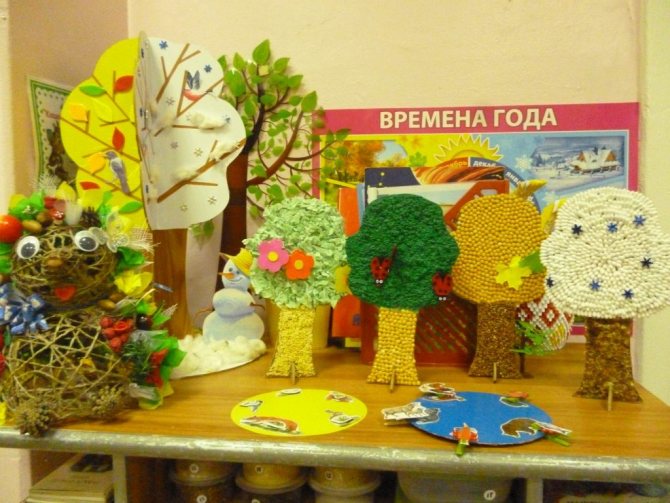
Corner of the seasons
- The demonstration material will also be useful for studying local history. The teacher is unlikely to be able to purchase ready-to-use sets on the topics “My City”, “My Republic”, etc. Most likely, a card index is best suited for such activities, the pictures for which will be specially selected and printed.

